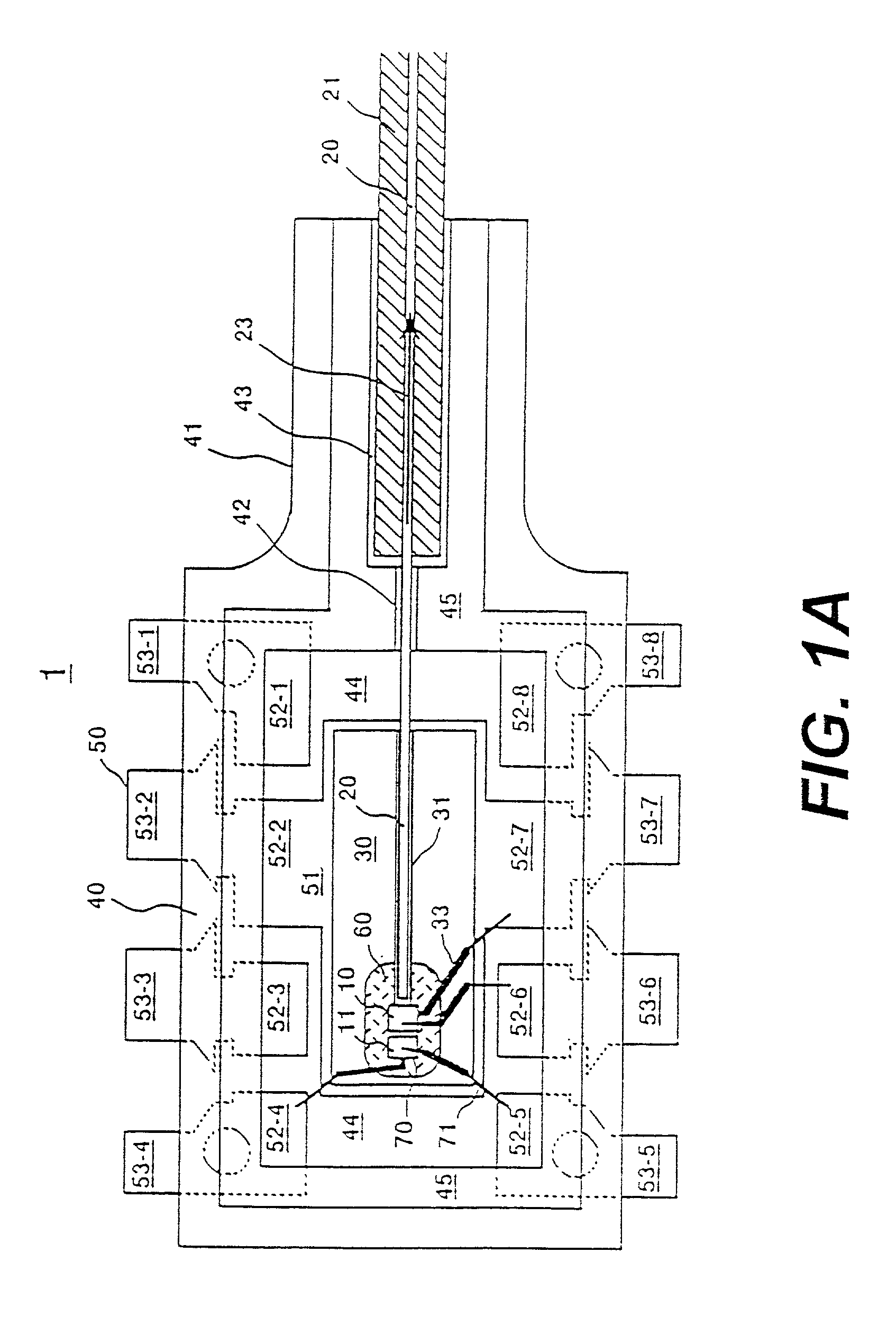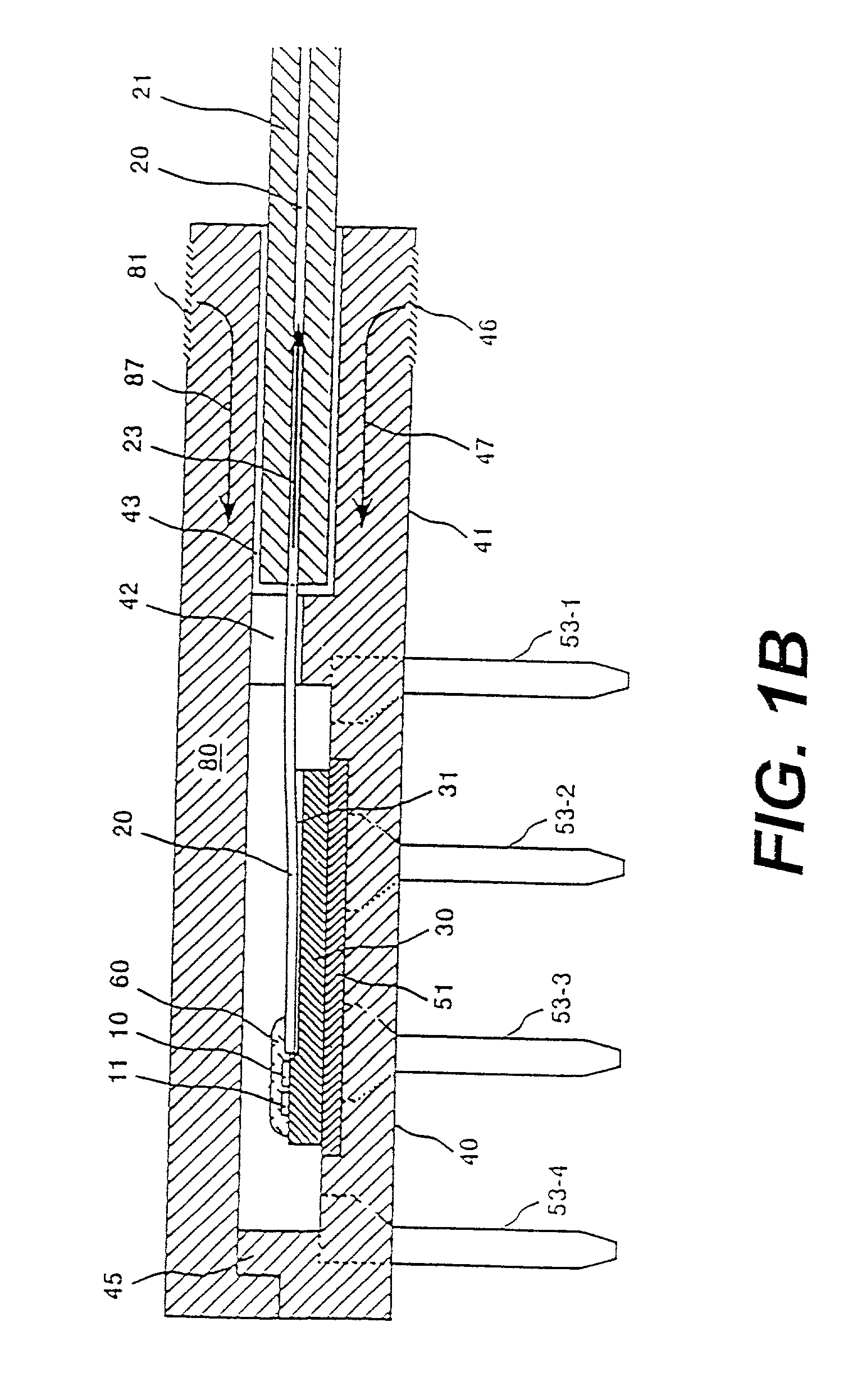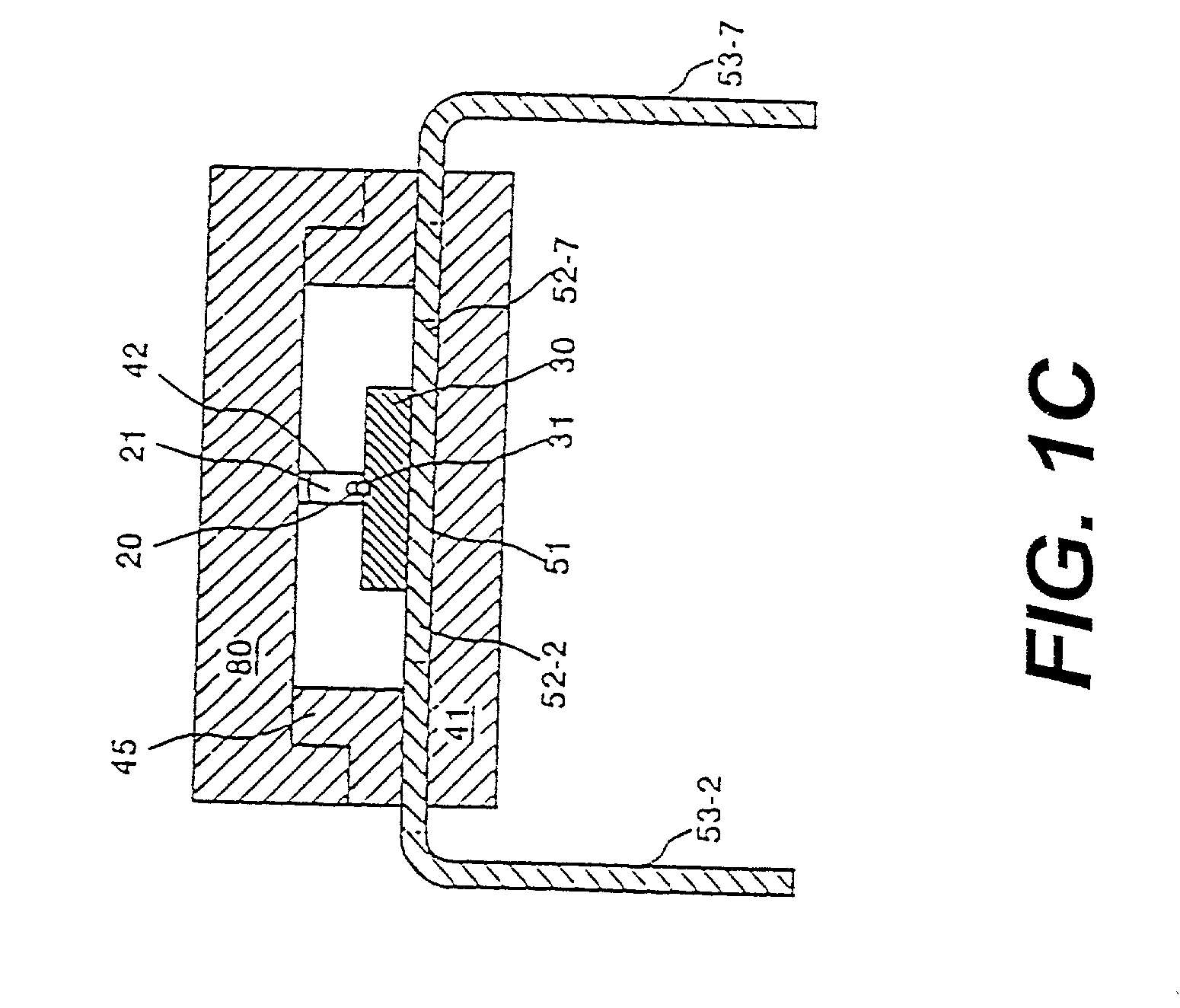Optical module, method for manufacturing optical module and optical communication apparatus
a manufacturing method and optical module technology, applied in the field of optical modules, can solve the problems of reducing the reliability of plastic packages, high moisture permeability, and large coefficient of thermal expansion, and achieve the effect of reducing the molding cost of resin case type packages and ensuring the reliability of optical modules
- Summary
- Abstract
- Description
- Claims
- Application Information
AI Technical Summary
Benefits of technology
Problems solved by technology
Method used
Image
Examples
first embodiment
[0104] The first embodiment is an example of the aforementioned "resin case type", more concretely, an example of a pigtail type optical transmission module for a resin case type package. The main characteristic thereof lies in that when a base and a cap of the package are molded, the flowing direction of a liquid crystal polymer is parallel with the direction of an optical axis of the optical fiber. With this, a molecular chain is oriented along the direction of the optical axis. Thereby, the elastic modulus of the optical package and the cap in that direction can be improved, and the coefficient of thermal expansion can be reduced. It is noted in this example that as a package molding method, an injection molding method is employed, and as a sealing method for an optical element and an optical fiber, a dropping method is employed. For the dropping, a low elastic resin is used.
[0105] The first embodiment according to the present invention will be explained in detail with reference ...
embodiment 2
[0151] The second embodiment provides an example of the above-described "Comprehensive molding type package", more specifically, an example of a pigtail type optical transmission module by way of a comprehensive molding type package. Its main characteristic lies in that when a package is molded, the flowing direction of an epoxy resin is parallel with an optical axis direction of a fiber. Accordingly, since the-flowing pressure of resin is not applied at vertically to the side of the fiber or jacket, the fiber or the jacket is not distorted at sideways, and molding is not made in the state where the alignment of the optical device and the fiber is deviated. Note that in this example, as the sealing method for the optical device and the fiber, a dropping method using a low elastic resin is used.
[0152] FIGS. 2A and 2B are respectively views of assistance in explaining the optical module according to the second embodiment. The present example shows a pigtail type optical transmission m...
embodiment 3
[0187] In the third embodiment, as a packaging method, a transfer molding method which is a comprehensive molding mold is employed. As a sealing method for an optical device and a fiber, a drooping method is employed. In transfer molding of a package, with respect to the flowing of resins from the gate portion, care is taken so that the flowing direction is parallel with the optical axis direction of the fiber. Thereby, the ferrule is prevented from being deviated in position due to the molding pressure to secure the processing accuracy of a receptacle portion (i.e., accuracy of connection with a connector).
[0188] The third embodiment of the present invention will be described hereinafter with reference to FIGS. 3A and 3B. FIG. 3A is a partial plan view as viewed from the top, and FIG. 3B is a partial sectional view as viewed from the side. FIGS. 3A and 3B show a receptacle type optical transmission module by way of a package formed by a comprehensive molding method.
[0189] As shown ...
PUM
 Login to View More
Login to View More Abstract
Description
Claims
Application Information
 Login to View More
Login to View More - R&D
- Intellectual Property
- Life Sciences
- Materials
- Tech Scout
- Unparalleled Data Quality
- Higher Quality Content
- 60% Fewer Hallucinations
Browse by: Latest US Patents, China's latest patents, Technical Efficacy Thesaurus, Application Domain, Technology Topic, Popular Technical Reports.
© 2025 PatSnap. All rights reserved.Legal|Privacy policy|Modern Slavery Act Transparency Statement|Sitemap|About US| Contact US: help@patsnap.com



